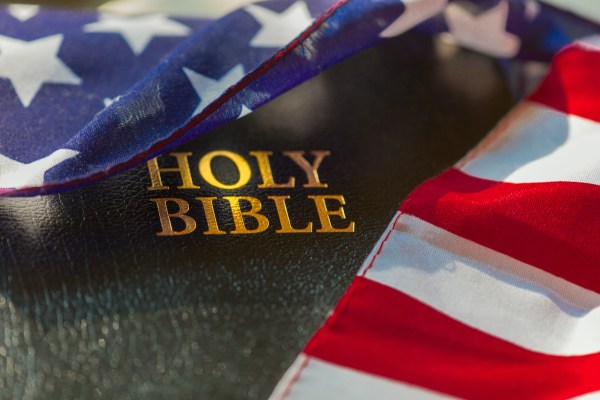Like a sandworm throwing off its rider, Frank Herbert’s 1965 sci-fi classic Dune has long defied filmmakers’ best efforts to master it. The cult director Alejandro Jodorowsky famously never got his version to the screen, though the effort itself spawned a documentary. David Lynch filmed the novel in 1984, but the result was a compromised studio cut widely regarded as a low point in his career. An early 2000s TV miniseries followed the books faithfully, but did little to dispel their “unfilmable” reputation.
And no wonder: Herbert’s Dune is a heady stew of socio-political allegory, religious mythmaking, and ecological parable. Its influences range from early Islamic history to 20th-century environmentalism, and it’s so densely packed with invented terminology that Herbert supplied a 30-page glossary to help the reader keep it all straight. Moreover, the fantastic visions that Herbert imagines—sandworms and spice fields and black suns—could easily have been rendered ridiculous rather than sublime. In short, Dune is a text that demands both blockbuster spectacle and literary intelligence. Not since Peter Jackson tackled The Lord of the Rings has a director faced such a daunting feat of adaptation.
All of which makes Denis Villeneuve’s two-part adaptation such a rare accomplishment. If 2021’s Dune: Part One offered a proof of concept—a promising opener with stunning visuals but unresolved pacing and story problems—Part Two is the worthy payoff. Not only does the sequel plumb greater depths than the first film, it also offers a master class in the craft of thoughtful adaptation.
As Part Two opens, Paul Atreides (Timothée Chalamet) and his mother Jessica (Rebecca Ferguson), have joined up with the Fremen, the indigenous population of Arrakis who share a common enemy in the Harkonnen imperialists who killed Paul’s father. The film’s early stretch has a hero-in-waiting quality, as Paul learns the ways of the desert from the Fremen, who start to believe he is a long-prophesied messiah.
For the average viewer, this brief sketch suggests one of the problems with adapting Dune: Didn’t Star Wars do this already? In fact, Herbert’s novel predated George Lucas’ space opera, but the larger cultural cache of Star Wars makes the cinematic comparison unavoidable. Director Christopher Nolan has favorably compared Dune: Part Two to The Empire Strikes Back, and the two series’ larger parallels come into closer view with the new film. (Desolate desert planet? Check. Evil emperor? Check. A prophetically ordained Chosen One who must conquer fear and daddy issues to face his destiny, all under the influence of a magical energy source? Check, check, and check.)
Villeneuve, however, seems undaunted by such cinematic parallels—if anything, he consciously draws attention to them. Part Two also draws liberally from Lawrence of Arabia, echoing not only its stunning desert compositions but its larger story of a foreign aristocrat rallying tribal dependents into an anti-colonial uprising. Gladiator gets its due in an arena duel showcasing the savage talents of newcomer villain Feyd-Rautha Harkonnen (Austin Butler). Nolan’s influence is obvious—check out that booming Hans Zimmer score—but Villeneuve also takes inspiration from old swords-and-sandals epics like Ben-Hur and Spartacus. He even drops a hint of Life of Brian in his quasi-comic depiction of Stilgar (Javier Bardem), a fanatical true believer who insists on Paul’s messianic status no matter where the evidence points.
In lesser hands, Dune might have fallen apart under the weight of these disparate influences, turning into mere pastiche. Villeneuve’s talent lies in making all these pieces sing together, while honoring the imperfect source material. Reader beware: spoilers ahead.
Herbert’s original Dune, it must be said, is far from perfect, often burdened by turgid prose and ungainly plotting. What really counts is the audacity of Herbert’s larger vision. Dune starts as a hero’s journey but turns into a tale of jihad waged by a false prophet, who claims messianic status only to deliver slaughter and subjugation.
This arc is not immediately clear in the first Dune book, which ends on a triumphant note as Paul avenges his father and delivers victory for the Fremen. But Villeneuve, unusually for a Hollywood blockbuster, embraces the story’s darker implications rather than obfuscating them. In the final act, Chalamet’s performance curdles into a sort of megalomaniacal resignation, as Paul realizes his destiny is to lead the Fremen masses into a “holy war” that will deliver him to power and them to slaughter. It’s a chilling and charismatic performance that should dispel any lingering doubts about his acting prowess.
What helps sell the third act, though, is an important change Villeneuve makes to another character. Chani, played here by Zendaya, is Paul’s Fremen lover who shows him her people’s ways but disbelieves the messianic prophecy. In the book, she has no such doubts and ultimately becomes Paul’s willing concubine; in the movie, Chani breaks with Paul as she sees him embracing power for its own sake. Zendaya effectively conveys both Chani’s heartbreak at losing Paul and her fierce determination to ensure justice for the Fremen, holding her own against more seasoned actors like Bardem and Ferguson.
In one sense, the change to Chani’s character could be seen as a concession to modern sensibilities, preempting the critique that Dune’s female lead lacks agency in the novel. On a similar note, Villeneuve even includes one comic exchange in which Paul “mansplains” sand-walking to Chani, earning a withering stare. Thankfully, though, Villeneuve is otherwise uninterested in scoring culture war points with this material. Chani’s transformation makes sense from a dramatic perspective: It anticipates Paul’s eventual betrayal of his supporters and personifies that development within a single character. It’s the kind of change that may irk purists of the book series but makes for a more dramatic final act.
The upshot of Villeneuve’s adaptation is to allow Dune enough breathing room to enjoy any number of ideological readings. Certainly Dune is in part a left-leaning critique of imperialism and wanton resource extraction. One could even see Paul as a con man who rallies the masses to Make Arrakis Great Again while ultimately serving his own family’s interests. Herbert himself claimed that he wrote Dune “because I had this idea that charismatic leaders ought to come with a warning label on their forehead: ‘May be dangerous to your health.’”
On the other hand, Herbert himself was politically conservative, explicitly invoking John F. Kennedy as “one of the most dangerous presidents we had” for leading the nation deeper into Vietnam. Whether one agrees with that judgment or not, the story’s cautionary warning about charismatic leadership carries a conservative valence that adherents of Edmund Burke would recognize. The film’s Fremen ultimately surrender their centuries of preserved tradition to the giddy throes of revolution, placing their trust in an off-world outsider who promises utopia. This is a tragic mistake, for Paul is ultimately the figurehead of an elitist political faction, not a steward of the Fremen’s own interests.
Pick your preferred reading, then, or pick none at all and simply enjoy Dune: Part Two as pure spectacle. From the ominous opener featuring Harkonnen assassins flying up a desert rockscape to the climatic sandworm showdown, Dune: Part Two boasts extraordinary set pieces. And audiences have richly rewarded that spectacle to the tune of $460 million globally, much of that haul coming from premium formats like IMAX and 70mm film.
Those box office receipts are already raising hopes about the future of the franchise and the movie business as a whole. Villeneuve plans to adopt the second book, Dune Messiah, as the conclusion of a trilogy, which will test his adaptive abilities to the limit. By all accounts, Messiah is even less approachable than the original Dune, dominated by lengthy disquisitions and some truly bizarre plot points. But Villeneuve has earned the benefit of the doubt. The first Dune was a risky bet made even more so by its COVID-era release on HBO Max. Now, the theatrical success of Part Two may grant Villeneuve the rare status enjoyed by Christopher Nolan, who can likewise make studios greenlight and finance unlikely material on his own terms.
What’s less clear is whether other filmmakers will be given that kind of chance. Villeneuve has enjoyed an enviable career arc, graduating from the Québecois arthouse scene to the commanding heights of Hollywood while still retaining a recognizable directorial aesthetic. All of Villeneuve’s films share a tangible sense of place, a Spielberg-like knack for scope and wonder, and a patient willingness to explore the nooks and crannies of the strange environments he depicts. That is true whether Villeneuve is depicting extraterrestrial visions in Arrival or, much closer to home, the unforgiving cartel land of Juarez in Sicario. Even his for-hire studio work (Prisoners) and franchise fare (Blade Runner 2049) are a cut above the competition, and reliably more interesting than the output of the Marvel blockbuster factory.
Here’s hoping, then, that Villeneuve gets the chance to go even bigger and weirder with his next installment. And here’s hoping, too, that he will use his clout to advocate for other filmmakers to get their share of studio largesse. Dune: Part Two is worth every bit of its near-$200 million budget, but as American Fiction director Cord Jefferson said at this year’s Oscars, there’s nothing wrong with making 20 $10-million movies too. Indeed, those are the kinds of movies in which a young Denis Villeneuve cut his teeth. Hollywood would do well to cultivate more of such talent.








Please note that we at The Dispatch hold ourselves, our work, and our commenters to a higher standard than other places on the internet. We welcome comments that foster genuine debate or discussion—including comments critical of us or our work—but responses that include ad hominem attacks on fellow Dispatch members or are intended to stoke fear and anger may be moderated.